


What does the town of Twin Peaks have to do with the peaks of the Himalayas? Why does Special Agent Dale Cooper feel connected to Tibet and its people? Read on to discover the connections between the mysteries in Twin Peaks: The Return and the artworks in the Rubin’s collection.
Warning: spoilers are ahead.
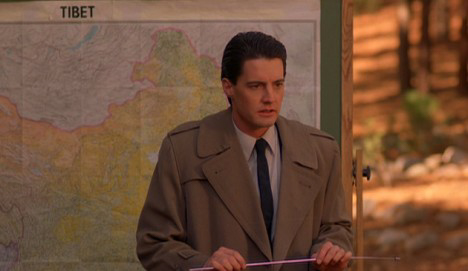
Agent Cooper explains his Tibetan-inspired deduction technique to skeptical colleagues.
After hitting a roadblock in the murder case of Laura Palmer, Agent Cooper lectures the Twin Peaks Sheriff’s Department on the culture of Tibet and why he feels it will help him solve the mystery. He explains:
“Following a dream I had three years ago, I have become deeply moved by the plight of the Tibetan people, and have been filled with a desire to help them. I also awoke from the same dream realizing that I had subconsciously gained knowledge of a deductive technique, involving mind-body coordination operating hand-in-hand with the deepest level of intuition.”
What is the technique he dreamed of? As Sheriff Harry S. Truman reads a list of suspects aloud, Agent Cooper throws a rock at a glass bottle after each name. When Sheriff Truman names Leo Johnson, Cooper hits the glass bottle, shattering it. Cooper is certain that his next move is to investigate Leo’s connection to Laura Palmer’s murder.
While Cooper’s deduction technique isn’t actually Tibetan in origin, the cultures of the Himalayas have a long tradition of using divination to help make important decisions. One of the objects in the Rubin’s collection relates directly to this tradition: an impressive illustrated manuscript of the White Beryl, a 17th-century text written for the Fifth Dalai Lama that combines Chinese elemental divination with Indian and Nepalese astrology, creating an incredibly complex system to help guide future decisions.
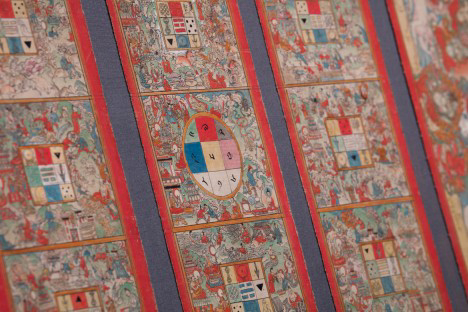
Close-up image from the White Beryl displaying its exquisite detail. Illustrated White Beryl Elemental Divination Manuscript; Sakya Monastery, Tsang region, Central Tibet; mid-18th century; Pigment on cloth; Rubin Museum of Art; Rubin Museum of Art; C2015.7
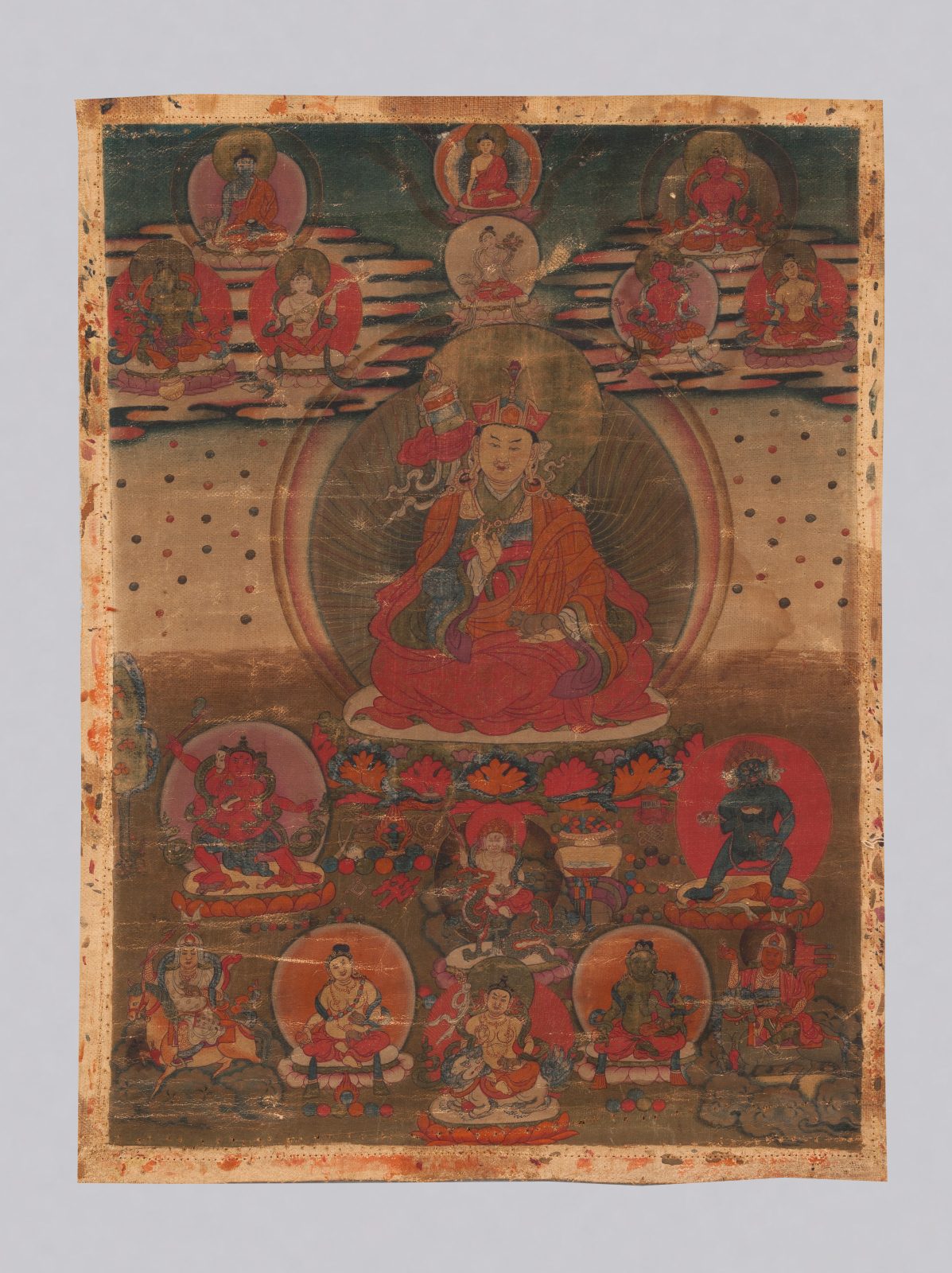
A painting of the great Indian saint Padmasambhava, who helped bring Buddhism to Tibet in the eighth century. Padmasambhava; Kham Province, Eastern Tibet; 19th century; Pigments on cloth; Rubin Museum of Art; Rubin Museum of Art, Gift of Shelley and Donald Rubin; C2006.66.127
While having breakfast at the Great Northern Hotel with fellow FBI agent Albert Rosenfield, Agent Cooper explains how Buddhism came to Tibet.
“Buddhist tradition first came to the land of snow in the fifth century AD. The first Tibetan king to be touched by the Dharma was King Hathatha Rignamputsan. He and succeeding kings were collectively known as the Happy Generations. Now some historians place them in the water snake year, 213 AD. Others in the year of the water ox, 173 AD. Amazing isn’t it? The Happy Generations.”
Unfortunately, Coop’s enthusiasm for the story didn’t make him accurate. Most Tibetan historians date the first introduction of Buddhism to Tibet to the seventh century, during the reign of King Songtsen Gampo. But Buddhism did not become established in the Himalayas until the arrival of the great Indian Buddhist saint Padmsambhava, who was believed to subdue the local spirits that didn’t want this foreign religion to invade their territory. Though Dale Cooper’s story uses a different name, it does seem to reference the fifth-century King Thothori Nyantsen. According to legend, during this king’s reign, a Buddhist text fell from the sky. Recognizing its importance, the king kept the text without truly understanding what it contained.
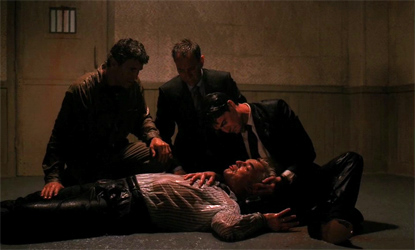
Agent Cooper comforts Leland as he passes away.
After Leland Palmer realizes that he killed his daughter Laura while possessed by the evil spirit BOB, Agent Cooper holds the distraught and dying Leland and says these words of comfort to him:
“Leland, the time has come for you to seek the path. Your soul has set you face-to-face with the clear light, and you are now about to experience it in all its reality, wherein all things are like the void and cloudless sky, and the naked, spotless intellect is like a transparent vacuum, without circumference or center. Leland, in this moment, know yourself, and abide in that state. Look to the light, Leland. Find the light.”
This speech paraphases the most famous Tibetan book in the West, The Tibetan Book of the Dead. Known as the Bardo Thodrol in the Tibetan language, the book is considered a “treasure text,” written by Padmasambhava during the eighth century but not revealed until the fourteenth century by the treasure revealer Karma Lingpa. The text describes what happens to someone’s consciousness between the states of death and rebirth. Below is the original text that parallels Agent Cooper’s speech:
“O, nobly-born [so-and-so by name], the time hath now come for thee to seek the Path [in reality]. Thy breathing is about to cease. Thy guru hath set thee face to face before with the Clear Light; and now thou art about to experience in its Reality in the Bardo state, wherein all things are like the void and cloudless sky, and the naked, spotless intellect is like unto a transparent vacuum without circumference or center. At this moment, know thou thyself, and abide in that state.”
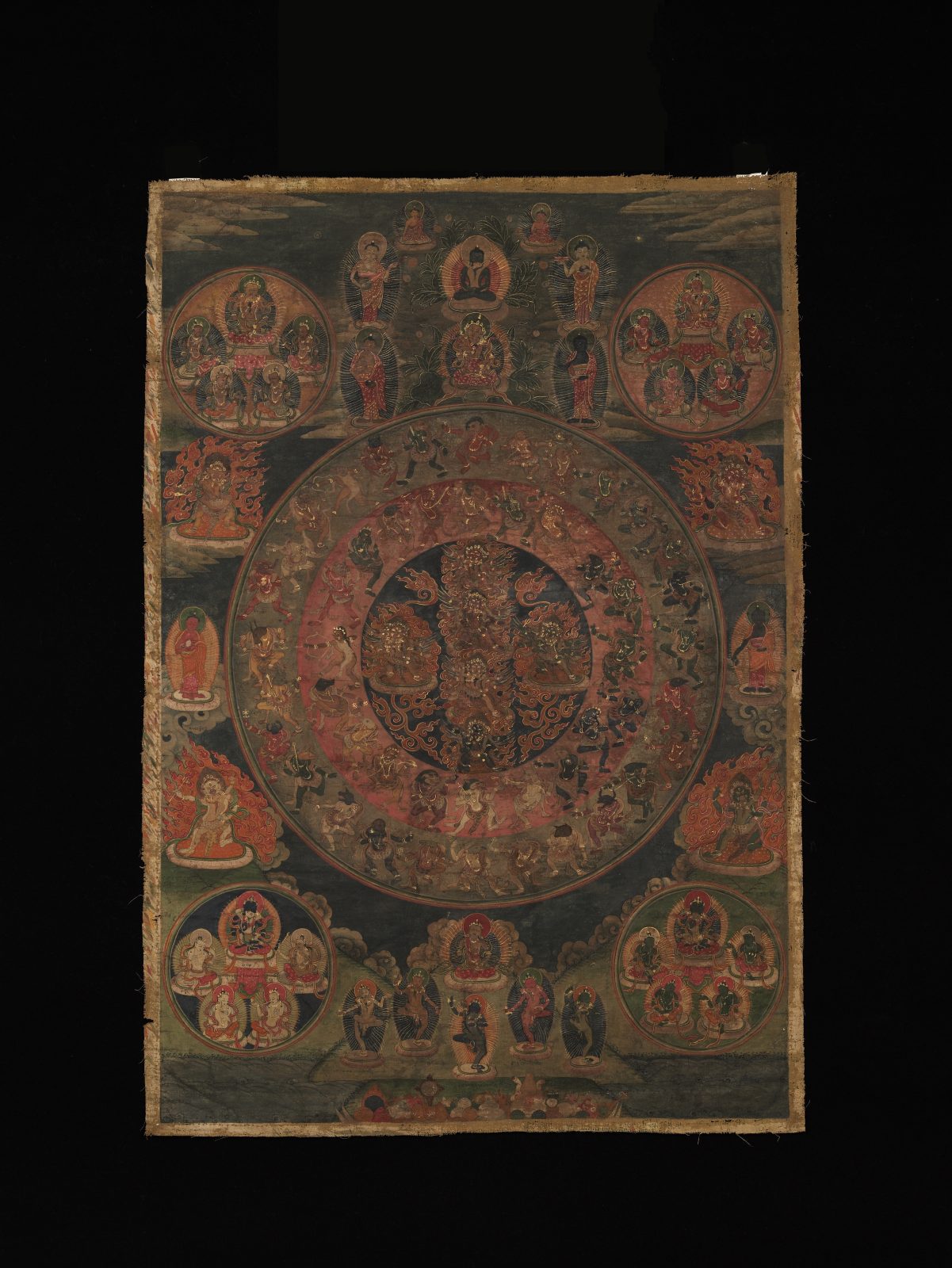
Peaceful and Wrathful Deities of the Bardo; Tibet; 19th century; Ground mineral pigments on cotton; Rubin Museum of Himalayan Art, Gift of Shelley and Donald Rubin; C2006.66.539
Get the latest news and stories from the Rubin, plus occasional information on how to support our work.